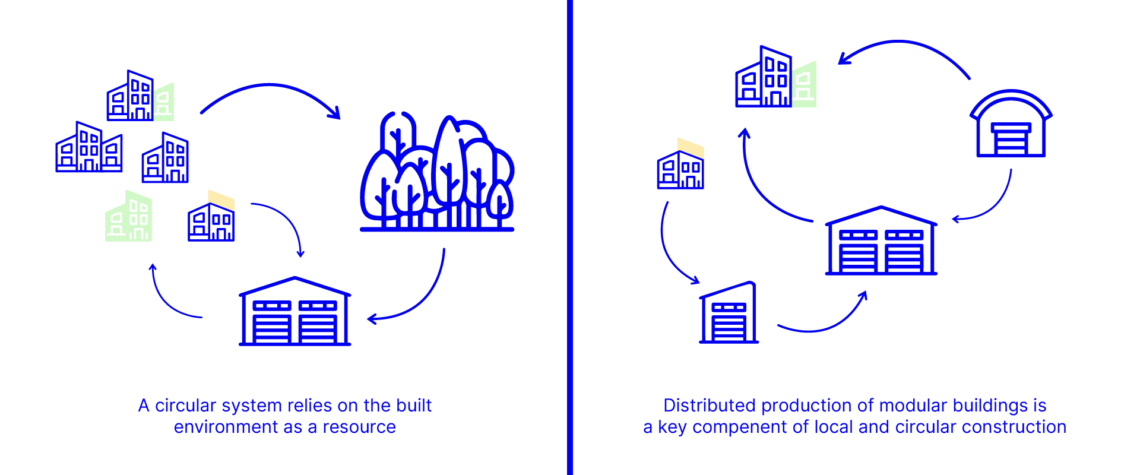Why?
If we want to move towards environmentally sustainable solutions in construction, meet EU policies and global targets for GHG reduction – a perfect storm in the sector is inevitable.
What?
The future of construction is modular, produced largely in factories and made mainly of biogenic materials. This is the only way the construction industry can become circular, and find the balance between the built and the naturally grown environment. The industry needs buildings made of standard components that can be disassembled and reassembled many times.
How?
Our moonshot idea is based on the assumption that 75% of new buildings can be constructed with a kit of modular building components made of mainly biogenic materials (wood, hemp, straws etc). A standardised and modular approach will help to radically reduce the environmental impact throughout a building’s life cycle, since construction components can be optimised to material use, and modular buildings can be easily extended, disassembled and reassembled, making buildings and its components part of circular usage.

During the Accelerate Estonia experiment, we will use the 369 Pattern Buildings platform to design kindergartens and office buildings. We will benchmark these modular designs against designs that prevail today. We will compare the use of different biogenic materials and analyse their carbon footprint. We will formulate recommendations for national and local policy makers to align with the Green Deal.
What does this mean for Estonia?
Estonia is about to limit GHG emissions of construction. We have the opportunity to show how an open construction platform can play a key role in radically reducing emissions and impact to the natural environment while creating a healthy environment for ourselves. The platform will boost our off-site construction industry and allow us to offer a unified design and production service of low-impact buildings to the countries within a reasonable transportation range.



